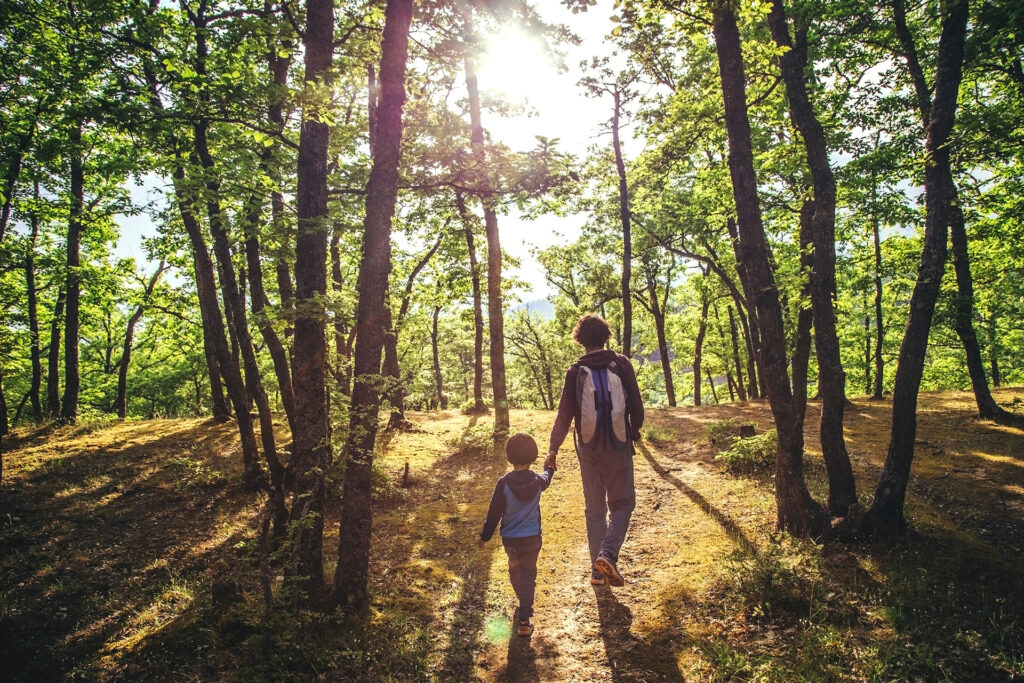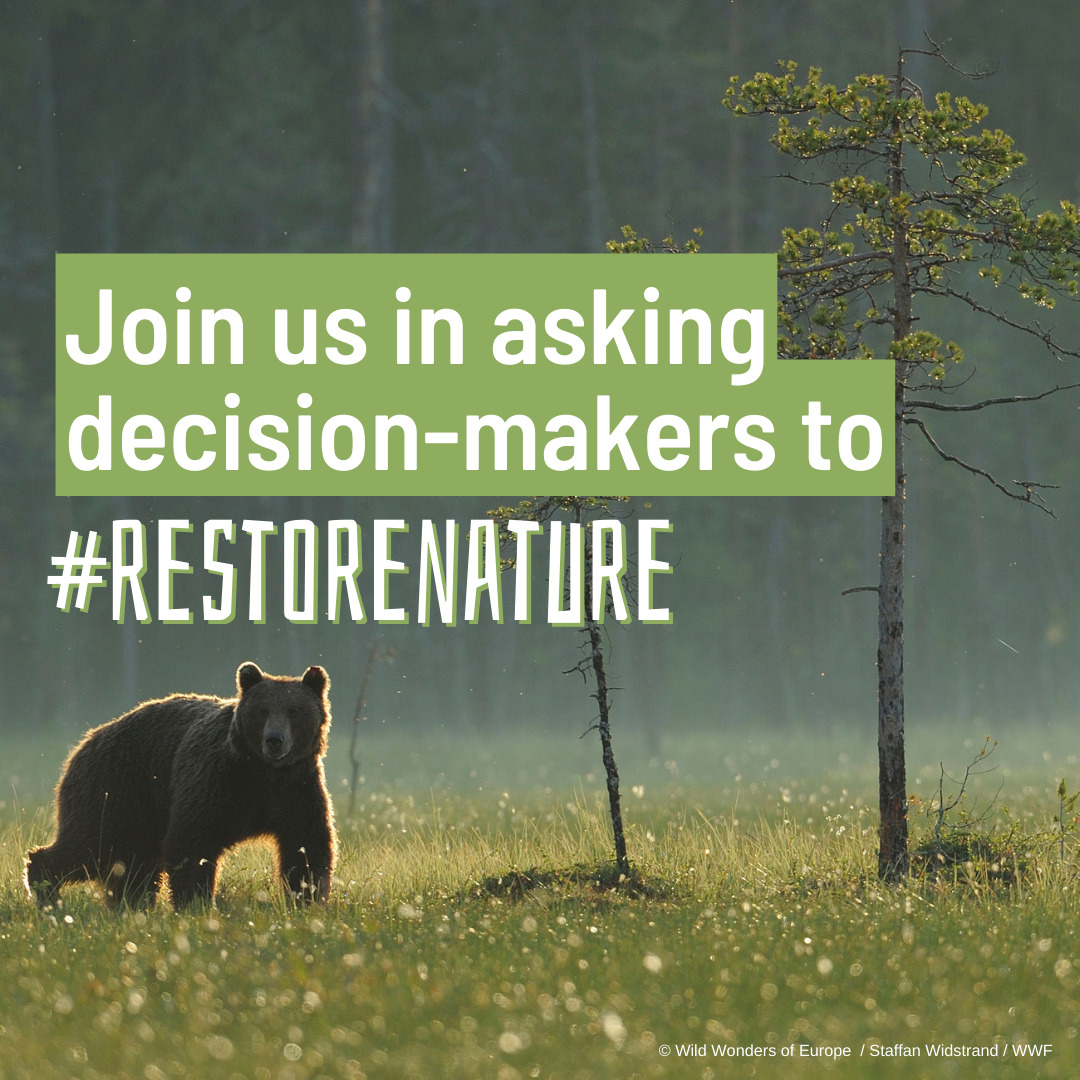Giulia Testa is the coordinator of the European Young Rewilders. She has a master’s degree in Environmental Law and Policy specialised in biodiversity law. She has coordinated and has been actively involved in the youth advocacy project around the EU Nature Restoration Law since 2021, presenting youth perspectives and demands to EU decision-makers. Giulia is also part of the youth consistuency of the Convention on Biodiversity. In this opinion piece, she talks about how important the EU Nature Restoration Law is to the younger generation.

Ambitious and enforceable
Talks and negotiations on the EU Nature Restoration Law – which could be a game changer for European wild nature – are still ongoing. Since the beginning of this process, the European Young Rewilders (and its predecessor, the Young Rewilders Community) have strongly emphasised how important it is to young people that this law is both ambitious and enforceable.
A few years ago, rewilding wasn’t the first thing that sprang to mind when the priorities of the Nature Restoration Law were laid out. Now it seems like a no-brainer, given rewilding’s critical role in enhancing nature recovery. The position of young people towards the legal proposal, as laid out in the new Youth Position on EU Nature Restoration Regulation, reads:
“Young people support rewilding as a key restoration measure to drive fast recovery of damaged ecosystems and restoration of degraded landscapes. Rewilding, focusing on enabling and restoring natural processes to establish a healthy and resilient ecosystem, lets nature lead, trusting its forces to shape land and seas. Rewilding is a huge opportunity to facilitate an earlier fulfilment of the objectives and long-term recovery, allowing future generations to benefit from a restored environment sooner and for longer.”

Common youth position
I kickstarted and led the youth advocacy project towards the Nature Restoration law back in 2021, when I was covering the role of Biodiversity Coordinator for Generation Climate Europe. By convening EU environmental youth organisations and networks that represented more than 20 million young Europeans, we created a first common youth position on this law ahead of the proposal.
Together with the Global Youth Biodiversity Network Europe, Youth & Environment Europe, Biodiversity Action Europe and Young Friends of the Earth Europe, the Young Rewilders Community (the predecessor of the European Young Rewilders) was among the contributor and signatories. The underlying premise of our position has always been that restoring nature is also a matter of intergenerational equity. Restoring nature means that young Europeans can finally witness wilder ecosystems.
Sometimes we just passively accept that nature is degraded and that wildlife is something we will never truly experience. But it does not need to be – and cannot be – like this forever. At the same time, future generations deserve to live in functioning ecosystems and derive all the benefits that come from them.

Action before 2030
After the draft of the law came out, the youth coalition produced a follow-up document with renewed recommendations, which was presented to the European Parliament. The recommendations in the position revolve around delivering an ambitious law that does not shift the burden of action too much in the future, delaying action and putting the weight of efforts on current young people, which adds to considerations of intergenerational equity. One of the main demands, indeed, is for the law to respect the principle of intergenerational equity by ensuring that most action is taken before 2030.
One of the ways to do it, is to implement rewilding as a key restoration measure. This remark was welcomed by other organisation and, as the text above shows, rewilding is explicitly mentioned in the paper. After so much doom and gloom, young people really want to see our landscapes thriving and abundant with wildlife. We want nature to be given the possibility to transform our continent for the best – instead of just daydreaming about it. With this law, we want to see ambitions that reflect our willingness to challenge the way things have always been done so far.

Youth inclusion
Young people are increasingly enthusiastic about rewilding and want to be empowered to act. A pivotal point of youth advocacy is the inclusion of youth in the decision-making processes and in restoration plans. We are not only beneficiaries of an ambitious law. We are here to support its implementation. When we talk about young people we are talking about scholars, professionals, and practitioners of restoration. I see students getting specialized in how to restore ecosystems, people in their 20s restoring their family properties, and early careers steering their professional choices towards rewilding and restoration.
The European Young Rewilders regularly give visibility to youth-led rewilding activities and showcase how the youth is restoring nature across Europe. The goal is to provide inspiration to others (not necessarily young), while also facilitating the exchange of views and experiences. Many of us have grown up being told how ecosystems are polluted and destroyed and why we need to bring back nature, making us very eager and sensitive to the topic. Despite this, young people face some very real challenges. This is especially true when it comes to financing, and accessibility and participation to environmental decision-making and implementation efforts.

Time to act
In summation, while the EU Nature Restoration Law is a great opportunity to deliver a wilder and healthier Europe, we would also like to see it enable young people to become formally involved in restoration and rewilding, with all our efforts recognised. At the moment rewilding has great momentum, an important law is about to be adopted, and degraded ecosystems are in desperate need of restoration. Generation rewilding has passion, solutions, and a desire to make a real difference. There has never been a better time to act.

